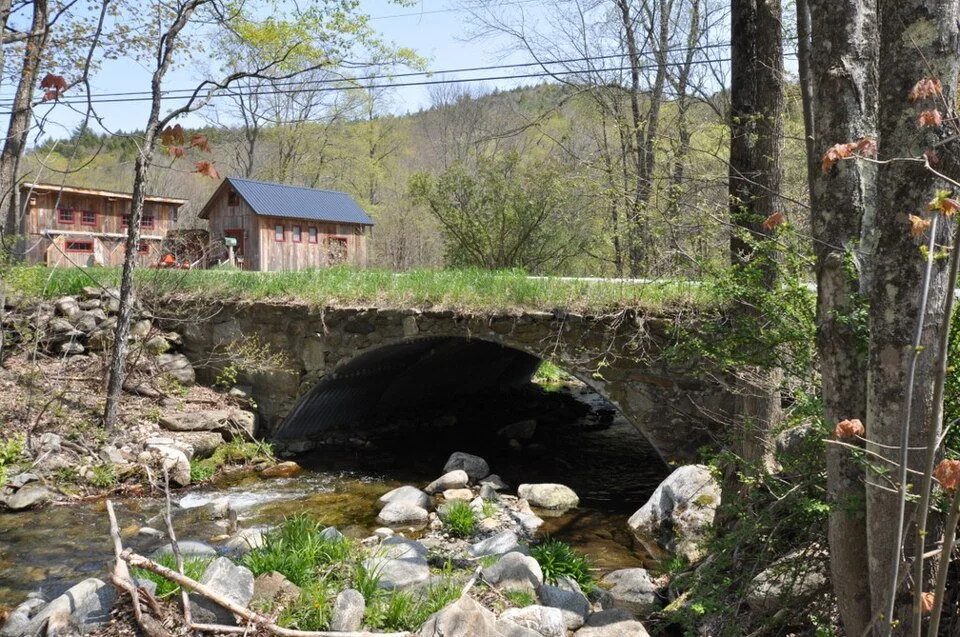
How long their terms?
Fisher Ames, by Gilbert Stuart.
Speech by Massachusetts state Representative (and soon Congressman) Fisher Ames (1758-1808) on Jan. 15, 1788 at the state convention called to decide whether to ratify the U.S. Constitution, which Ames, a lawyer, strongly supported. The resolution to approve ratification passed 187-168.
I do not regret, Mr. President, that we are not unanimous upon this question. I do not consider the diversity of sentiment which prevails as an impediment in our way to the discovery of truth. In order that we may think alike upon this subject at last, we shall be compelled to discuss it by ascending to the principles upon which the doctrine of representation is grounded.
Without premeditation, in a situation so novel, and awed by the respect which I feel for this venerable assembly, I distrust extremely my own feelings, as well as my competency to prosecute this inquiry. With the hope of an indulgent hearing, I will attempt to proceed.
I am sensible, sir, that the doctrine of frequent elections has been sanctioned by antiquity, and is still more endeared to us by our recent experience and uniform habits of thinking. Gentlemen have expressed their zealous partiality for it. They consider this as a leading question in the debate, and that the merits of many other parts of the Constitution are involved in the decision. I confess, sir, and I declare that my zeal for frequent elections is not inferior to their own. I consider it as one of the first securities for popular liberty, in which its very essence may be supposed to reside. But how shall we make the best use of this pledge and instrument of our safety?
A right principle, carried to an extreme, becomes useless. It is apparent that a declaration for a very short term, as for a single day, would defeat the design of representation. The election, in that case, would not seem to the people to be of any importance, and the person elected would think as lightly of his appointment. The other extreme is equally to be avoided. An election for a very long term of years, or for life, would remove the member too far from the control of the people, would be dangerous to liberty, and in fact repugnant to the purposes of the delegation. The truth, as usual, is placed somewhere between the extremes, and I believe is included in this proposition:
The term of election must be so long, that the representative may understand the interest of the people, and yet so limited, that his fidelity may be secured by a dependence upon their approbation.
Before I proceed to the application of this rule, I cannot forbear to premise some remarks upon two opinions, which have been suggested.
Much has been said about the people divesting themselves of power, when they delegate it to representatives; and that all representation is to their disadvantage, because it is but an image, a copy, fainter and more imperfect than the original, the people, in whom the light of power is primary and unborrowed, which is only reflected by their delegates. I cannot agree to either of these opinions. The representation of the people is something more than the people. I know, sir, but one purpose which the people can effect without delegation, and that is to destroy a government. That they cannot erect a government, is evinced by our being thus assembled on their behalf.
The people must govern by a majority, with whom all power resides. But how is the sense of this majority to be obtained? It has been said that a pure democracy is the best government for a small people who assemble in person. It is of small consequence to discuss it, as it would be inapplicable to the great country we inhabit.
It may be of some use in this argument, how ever, to consider, that it would be very burdensome, subject to faction and violence; decisions would often be made by surprise, in the precipitancy of passion, by men who either understand nothing or care nothing about the subject; or by interested men, or those who vote for their own indemnity. It would be a government not by laws, but by men.
Such were the paltry democracies of Greece and Asia Minor, so much extolled, and so often proposed as a model for our imitation. I desire to be thankful that our people (said Mr. Ames) are not under any temptation to adopt the advice. I think it will not be denied that the people are gainers by the election of representatives.
They may destroy, but they cannot exercise, the powers of government in person, but by their servants they govern: they do not renounce their power; they do not sacrifice their rights; they become the true sovereigns of the country when they delegate that power, which they cannot use themselves to their trustees.
I know, sir, that the people talk about the liberty of nature, and assert that we divest ourselves of a portion of it when we enter into society. This is declamation against matter of fact. We cannot live without society; and as to liberty, how can I be said to enjoy that which another may take from me when he pleases? The liberty of one depends not so much on the removal of all restraint from him, as on the due restraint upon the liberties of others. Without such restraint, there can be no liberty. Liberty is so far from being endangered or destroyed by this, that it is extended and secured. For I said that we do not enjoy that which another may take from us. But civil liberty cannot be taken from us, when any one may please to invade it; for we have the strength of the society on our side.
I hope, sir, that these reflections will have some tendency to remove the ill impressions which are made by proposing to divest the people of their power.
That they may never be divested of it, I repeat that I am in favor of frequent elections. They who commend annual elections are desired to consider, that the question is, whether biennial elections are a defect in the Constitution; for it does not follow, because annual elections are safe, that biennial are dangerous; for both may be good. Nor is there any foundation for the fears of those, who say that if we, who have been accustomed to choose for one year only, now extend it to two, the next stride will be to five or seven years, and the next for term of life; for this article, with all its supposed defects, is in favor of liberty. Being inserted in the Constitution, it is not subject to be repealed by law. We are sure that it is the worst of the case. It is a fence against ambitious encroachments, too high and too strong to be passed. In this respect, we have greatly the advantage. of the people of England, and of all the world. The law which limits their Parliaments is liable to be repealed.
I will not defend this article by saying that it was a matter of compromise in the federal Convention. It has my entire approbation as it stands. I think that we ought to prefer, in this article, biennial elections to annual; and my reasons for this opinion are drawn from these sources:
From the extent of the country to be governed;
The objects of their legislation;
And the more perfect security of our liberty.
It seems obvious that men who are to collect in Congress from this great territory, perhaps from the Bay of Fundy, or from the banks of the Ohio, and the shore of Lake Superior, ought to have a longer term in office, than the delegates of a single state, in their own legislature. It is not by riding post to and from Congress that a man can acquire a just knowledge of the true interests of the Union. This term of election is inapplicable to the state of a country as large as Germany, or as the Roman empire in the zenith of its power.
If we consider the objects of their delegation, little doubt will remain. It is admitted that annual elections may be highly fit for the state legislature. Every citizen grows up with a knowledge of the local circumstances of the state. But the business of the federal government will be very different. The objects of their power are few and national. At least two years in office will be necessary to enable a man to judge of the trade and interests of the state which he never saw. The time, I hope, will come, when this excellent country will furnish food, and freedom, (which is better than food, which is the food of the soul,) for fifty millions of happy people. Will any man say that the national business can be understood in one year?
Biennial elections appear to me, sir, an essential security to liberty. These are my reasons:
Faction and enthusiasm are the instruments by which popular governments are destroyed. We need not talk of the power of an aristocracy. The people, when they lose their liberties, are cheated out of them. They nourish factions in their bosoms, which will subsist so long as abusing their honest credulity shall be the means of acquiring power. A democracy is a volcano, which conceals the fiery materials of its own destruction.
These will produce an eruption, and carry desolation in their way. The people always mean right; and, if time is allowed for reflection and information, they will do right. I would not have the first wish, the momentary impulse of the public mind, become law; for it is not always the sense of the people, with whom I admit that all power resides. On great questions, we first hear the loud clamors of passion, artifice, and faction. I consider biennial elections as a security that the sober. second thought of the people shall be law. There is a calm review of public transactions, which is made by the citizens who have families and children, the pledges of their fidelity To provide for popular liberty, we must take care that measures shall not be adopted without due deliberation. The member chosen for two years will feel some independence in his seat. The factions of the day will expire before the end of his term.
The people will be proportionably attentive to the merits of a candidate. Two years will afford opportunity to the member to deserve well of them, and they will require evidence that he has done it.
But, sir, the representatives are the grand inquisition of the Union. They are, by impeachment, to bring great offenders to justice. One year will not suffice to detect guilt, and to pursue it to conviction; therefore they will escape, and the balance of the two branches will be destroyed, and the people oppressed with impunity. The senators will represent the sovereignty of the states.
The representatives are to represent the people. The offices ought to bear some proportion in point of importance. This will be impossible if they are chosen for one year only.
Will the people, then, blind the eyes of their own watchmen? Will they bind the hands which are to hold the sword for their defence? Will they impair their own power by an unreasonable jealousy of themselves?
For these reasons, I am clearly of opinion that the article is entitled to our approbation as it stands; and as it has been demanded, why annual elections were not preferred to biennial, permit me to retort the question, and to inquire, in my turn, what reason can be given, why, if annual elections are good, biennial elections are not better?
The inquiry in the latter part of Mr. Ames’s speech being directed to the Hon. Mr. Adams, that gentleman said, he only made the inquiry for information, and that he had heard sufficient to satisfy himself of its propriety.
Set to dream
This is the first aerial photograph of Boston, taken on Oct. 13, 1860, by James Wallace Black, from a hot-air balloon lifted 1,200 feet above Boston Common by Samuel Archer King's balloon, the “Queen of the Air". “Boston, as the Eagle and the Wild Goose See It’’ is the photo’s title.
Beautiful corpses
“Dead Tree #1,’’(archival inkjet print photo), by Alan Strassman, in his show “Dead Trees,’’ at Galatea Fine Art, Boston, Sept. 4-28.
He says:
“I spend a lot of time surrounded by trees. Live trees get most of the public attention and acclaim, but I find some of nature’s finest artwork among the dead trees.”
Road pride in Vermont
Simpsonville Stone Arch Bridge, north of the village of Townshend, Vt., on Route 35.
“In Vermont no back road of any pride is content to have only one name. In the next town to me and its neighbors to the north, for example, Grassy Brook Road becomes Archie Jones Road, becomes Lower Road, becomes Route 35, becomes Weaver Brook Road, becomes Cambridgeport Road — all in the course of about 15 miles of the same throughfare.’’
— Castle Freeman Jr. (born 1944), of Newfane, Vt., in his article “Unimproved Roads,’’ in the March 1998 Yankee Magazine.
Newfane, Vt., in 1909. Upland pastures were for cows and sheep.
Stationary violence
“Untitled Cyclone,’’ by Alice Aycock, at Morrison Gallery, Kent, Conn.
Dan O’Brien: Looking at heat islets in Boston
It was cooler then….
Boston Common is well-treed, making it the coolest place in the downtown “Hub,’’ except for the immediate coast when the wind is off the water.
From The Conversation, except for images above.
Dan O’Brien is a professor of public policy and urban affairs and director of the Boston Area Research Initiative at Northeastern University, in Boston.
He has received funding from the National Science Foundation's Smart & Connected Communities program for work.
BOSTON
It’s summer, and it’s been hot, even in northern cities such as Boston. But not everyone is hit with the heat in the same way, even within the same neighborhood.
Take two streets in Boston at 4:30 p.m. on a recent day, as an example. Standing in the sun on Lewis Place, the temperature was 94 degrees Fahrenheit (34.6 degrees Celsius). On Dudley Common, it was 103 F (39.2 C). Both streets were hot, but the temperature on one was much more dangerous for people’s health and well-being.
The kicker is that those two streets are only a few blocks apart. The difference epitomizes the urban heat island effect, created as pavement and buildings absorb and trap heat, making some parts of the city hotter.
The shade of a few nearby trees doesn’t keep Dudley Common from heating up several degrees more than neighboring streets.
A closer look at the two streets shows some key differences:
Dudley Common is public open space sandwiched between two thoroughfares that create a wide expanse of pavement lined with storefronts. There aren’t many trees to be found.
Lewis Place is a residential cul-de-sac with two-story homes accompanied by lots of trees.
This comparison of two places within a few minutes’ walk of each other puts the urban heat-island effect under a microscope. It also shows the limits of today’s strategies for managing and responding to heat and its effects on public health, which are generally attuned to neighborhood or citywide conditions.
The top circle is Dudley Common. The bottom is Lewis Place, where trees keep the cul-de-sac several degrees cooler. Imagery ©2025 Airbus Maxar Technologies, map data Google ©2025
Even within the same neighborhood, some places are much hotter than others owing to their design and infrastructure. You could think of these as urban heat islets in the broader landscape of a community.
Sensing urban heat islets
Emerging technologies are making it easier to find urban heat islets, opening the door to new strategies for improving health in our communities.
While the idea of reducing heat across an entire city or neighborhood is daunting, targeting specific blocks that need assistance the most can be faster and a much more efficient use of resources.
Doing that starts with making urban heat islets visible.
In Boston, I’m part of a team that has installed more than three dozen sensors across the Roxbury neighborhood to measure temperature every minute for a better picture of the community’s heat risks, and we’re in the process of installing 25 more. The Common SENSES project is a collaboration of community-based organizations, including the Dudley Street Neighborhood Initiative and Project Right Inc.; university researchers like me who are affiliated with Northeastern University’s Boston Area Research Initiative; and Boston city officials. It was created to pursue data-driven, community-led solutions for improving the local environment.
Data from those sensors generate a real-time map of the conditions in the neighborhood, from urban heat islets like Dudley Common to cooler urban oases, such as Lewis Place.
Technologies are becoming increasingly affordable and are being deployed in communities around the world to pinpoint heat risks, including Miami, Baltimore, Singapore and Barcelona. There are also alternatives when long-term installations prove too expensive, such as the U.S.’s National Oceanic and Atmospheric Administration volunteer science campaign, which has used mobile sensors to generate one-time heat maps for more than 50 cities.
Cooler communities, block by block
Although detailed knowledge of urban heat islets is becoming more available, we have barely scratched the surface of how they can be used to enhance people’s health and well-being.
The sources of urban heat islets are rooted in development –- more buildings, more pavement and fewer trees result in hotter spaces. Many projects using community-based sensors aspire to use the data to counteract these effects by identifying places where it would be most helpful to plant trees for shade or install cool roofs or cool pavement that reflect the heat.
Workers in Los Angeles apply a cool pavement coating to reflect heat rather than absorbing it. John McCoy/MediaNews Group/Los Angeles Daily News via Getty Image
However, these current efforts do not fully capitalize on the precision of sensors. For example, Los Angeles’ massive investment in cool pavement has focused on the city broadly rather than overheated neighborhoods. New York City’s tree planting efforts in some areas failed to anticipate where trees could be successfully planted.
Most other efforts compare neighborhood to neighborhood, as if every street within a neighborhood experiences the same temperature. London, for example, uses satellite data to locate heat islands, but the resolution isn’t precise enough to see differences block by block.
In contrast, data pinpointing the highest-risk areas enables urban planners to strategically place small pocket parks, cool roofs and street trees to help cool the hottest spaces. Cities could incentivize or require developers to incorporate greenery into their plans to mitigate existing urban heat islets or prevent new ones. These targeted interventions are cost-effective and have the greatest potential to help the most people.
Comparing maps of New York’s vegetation and temperature shows the cooling effect of parks and neighborhoods with more trees. In the map on the left, lighter colors are areas with fewer trees. Light areas in the map on the right are hotter. NASA/USGS Landsat
But this could go further by using the data to create more sophisticated alert systems. For example, the National Weather Service’s Boston office released a heat advisory for July 25, the day I measured the heat in Dudley Common and Lewis Place, but the advisory showed nearly the entirety of the state of Massachusetts at the same warning level.
What if warnings were more locally precise?
On certain days, some streets cross a crucial threshold – say, 90 F (32.2 C) – whereas others do not. Sensor data capturing these hyperlocal variations could be communicated directly to residents or through local organizations. Advisories could share maps of the hottest streets or suggest cool paths through neighborhoods.
There is increasing evidence of urban heat islets in many urban communities and even suburban ones. With data showing these hyperlocal risks, policymakers and project coordinators can collaborate with communities to help address areas that many community members know from experience tend to be much hotter than surrounding areas in summer.
As one of my colleagues, Nicole Flynt of Project Right Inc., likes to say, “Data + Stories = Truth.” If communities act upon both the temperature data and the stories their residents share, they can help their residents keep cool — because it’s hot out there.
So what’s ‘natural’ these days?
“Unnatural Study #21,’’ by Charlotte Niel, at the Griffin Museum of Photography, Winchester, Mass., through Aug. 17.
Ghost marketing
“Billboard” (skeleton) (watercolor), by William Talmadge Hall, in his “Obstructions to a Landscape” series.
Fine dining for Boston’s rats
A Brown Rat (aka Norway rat— the species found in Boston) looking for food waste in a park.
World War II poster.
A Boston Guardian article by Cullen Paradis. Images above put in by New England Diary.)
(New England Diary’s editor, Robert Whitcomb, is chairman of The Boston Guardian’s board.)
Although city government is already implementing new measures to curb Boston’s rat population, such hotspots as the South End and Back Bay still have weeks or months to wait before officials are done collecting data and rolling out new sensors and bins.
Special Project Manager Luke Hines and environmental services’ Assistant Commissioner John Ulrich couldn’t say definitively which neighborhoods have the worst rat problems today, though they hoped to have a clearer picture within two months as new monitoring systems come online.
Zac Brown, a manager with Clancy Bros. Pest Control, was able to supply The Boston Guardian with his company’s call statistics by ZIP code.
This year they got the most calls for rat infestations in Boston’s central neighborhoods from the South End at 43, followed by the Back Bay and Bay Village at 33.
While Clancy Bros.’ geographic breakdown would be affected by any number of business and cultural trends, its overall rat infestation call totals should give a more comprehensive picture of how fast populations are growing. This year’s rodent calls are already 10 percent above 2024’s total, sitting at 1,605 this July compared to 1,456 in the entirety of 2024.
Clancy Bros. responded to 15 rat infestations in the South End’s 02118 area code in 2024, but this year has already had 43. The Back Bay’s code of 02116 called just twice in 2024, but this year has called 33 times.
“There are just so many available food sources with the trash handling and old structures,” Brown said. “I’ve been doing this since I was 15 years old, been in the industry for like 22 years now, and it’s progressively just gotten worse over time. Every season increases more and more. The population in Boston has grown too, and [rats] thrive taking advantage of available food and structures.”
Brown, Hines and Ulrich all agreed that the main problem was trash left accessible, whether in common areas or as part of larger commercial operations. In years past the city has largely blamed a small number of commercial actors improperly disposing of their waste, but officials are now looking at the problem with a broader focus.
That focus has materialized as the Boston Rodent Action Plan, an analysis published with the help of urban rodentologist Dr. Bobby Corrigan back in July 2024. It identified four PANs (Priority Action Neighborhoods) which are Back Bay/Beacon Hill, Allston/Brighton, Dorchester/Roxbury, and the grab bag of District 3, which includes the Downtown, Chinatown, North End, South End, and Haymarket.
A year later, that plan is bearing material fruit as several pilot programs take root around the city. Mayor Michelle Wu herself highlighted new trash cans with lids installed in the North End, and a different barrel design on the Common has its own durable build and difficult to access interior.
Electronic counting traps set up in rat thoroughfares let officials monitor rat populations directly instead of relying on 311 calls for tipoffs about rat numbers and movement.
There are some tradeoffs, with newer designs requiring more maintenance, more money to buy and slightly more effort to access. But Hines said workers actually preferred servicing the new, more complex designs in initial trials. It turns out opening a lid is less frustrating than arriving on site and finding the trash barrels full of holes and garbage strewn around the street.
Today officials are collecting data with the sensors they’ve deployed to inform exactly where countermeasures are needed, a process that should finish by September. In September the sewer traps in the North End will be expanded into the Back Bay, followed by another six weeks to measure how effective new countermeasures are compared to control sites.
Until then, Brown recommends that residents keep an eye out for rat problems and report them before a property’s population balloons. The city does also perform inspections of potentially infested properties if they are reported to 311. An online public meeting is planned for August 12 at 6pm for residents that want to know more about the city’s rat control programs.
Chris Powell: Euphemism can’t erase doubts about sex-change therapy for minors
A young transgender woman before and after two years of hormone-replacement therapy.
MANCHESTER, Conn.
Is “gender-affirming care" good or bad?
Whatever it is, it's a euphemism, a term of camouflage to prevent something from being plainly understood and to present it in a favorable light -- in this case to diminish the controversy that would be recognized if the proper neutral, impartial, and descriptive term was used: sex-change therapy.
Since “gender-affirming care" is politically correct and most journalism seeks to be, journalism uses “gender-affirming care" to pretend that there is nothing questionable about it. After all, who could be against “care"?
But of course there are questions about it, and the controversy can't be concealed any longer now that the Trump administration is siding with the politically incorrect side of the issue.
First the Trump administration turned the federal government against transgenderism -- men in women's sports, bathrooms, and prisons -- and now it is using the federal government's enormous power over medical policy to dissuade hospitals from using drugs and surgeries to change the sex of minors.
As a result, Connecticut Children's Medical Center, in Hartford, is getting out of the sex-change therapy business for minors, and Yale New Haven Health is canceling its use of drugs in sex-change therapy for minors while continuing to provide minors with mental- health treatment for gender dysphoria.
Most hysterical about this in Connecticut is state Atty. Gen. William Tong. “This is the next ugly front in the ongoing war on American patients, doctors, nurses, and health care providers," Tong shrieks. “This is about scaring patients from seeking care and scaring doctors from providing care, regardless of who is harmed and the lives that will be lost. It's unconscionably reckless and yet another disturbing intrusion of partisan politics on our private lives and choices."
In Politically Correct World, where the attorney general resides, it's impossible to have a good reason for objecting to drug and surgical treatment for minors with gender dysphoria -- impossible to object because drugs and surgeries can have life-altering and irreversible effects on people who, according to law, are incapable of making such decisions for themselves, incapable of informed consent.
In P.C. World the issue of informed consent simply vanishes amid gender dysphoria, even though many minors who have undergone sex-change therapy have come to regret it, and many, if not most, young people with gender dysphoria seem to outgrow it.
Not only that, but in P.C. World anyone who does object cannot possibly have good intentions and cannot sincerely be concerned about the children who are to be subjected to life-altering drugs and surgeries. No, as the attorney general says, such people are just aiming to “scare" doctors and patients and are "unconscionably reckless."
As for what Tong calls the “disturbing intrusion of partisan politics on our private lives and choices," he hardly objected a few years ago when government was ordering people to submit to inadequately tested vaccines on pain of losing their jobs. Of course, back then those vaccines, like the attorney general himself, were politically correct, though not so much now as harmful side-effects are more recognized.
Like it or not, with government so heavily involved in medicine, politics is heavily involved as well. If you lose an election, the government may change medical policies contrary to your liking. That's democracy for you.
Tong and P.C. World seem not to remember that the party of political correctness lost last year's presidential and congressional elections in part because of its exaltation of transgenderism. But even if, as the attorney general insists, objecting to men in women's sports, bathrooms, and prisons while upholding longstanding protections for minors is fascism, it's a pretty tame version.
Gov. Ned Lamont is less hysterical than the attorney general but not much more thoughtful as he seeks to get his P.C. ticket punched. Responding to the change in federal policy on sex-change therapy, the governor says “In Connecticut we do not turn our backs on kids in need." Then maybe someone else can explain the thousands of Hartford and Bridgeport students recently reported to lack critical “special-education" services.
Chris Powell has written about Connecticut government and politics for many years (CPowell@cox.net).
Sky work in Burlington
“Prying into the Secrets of the Sky” (detail) (paper, bamboo, acrylic, wood and Dacron), by Jacob Hashimoto, in his show “Jacob Hashimoto: a lowercase sky,’’ at Burlington (Vt.) City Arts through Sept. 14.
The gallery explains that the show is an “immersive, site-specific installation combining traditional kite and design-making techniques, printmaking, and collage.’’
Whatever it takes to stay up
“Suspended By Belief” (collage, acrylic, gouache on board), by Samira Abbassy, at Moss Gallery, Portland, Maine, through Aug. 30.
The artist explains:
“The subject of much of the work evolves out of the question: How do I create a figure that embodies the metaphysical aspects of the figure? The work is an inquiry into how to reveal the figure as a psycho/emotional being, encountering its various internal states: the violence, ecstasy, and epiphany within. The key to my approach in painting the figure lies in an idea taken from Dante’s Inferno; that figures are“contorted according to their sin.” This implies an embodiment of psychological states, where the physical states mirror psychological dilemmas. Rather than portraits, the figures are archetypes, revealing themselves from the inside out; showing how it feels to be human, and their specific identities help uncover elements of a more universal Self. At times, the figure is represented as many selves, or many aspects of one unified Self, expressing an array of psychodynamic and existential realities.’’
‘A cottage industry’
Part of South Boston.
“South Boston {aka ‘Southie’} was, and arguably still is, the most politically active community in Massachusetts. It abounds both in widely known politicians and aspirants lusting to replace them in office….Politics was a cottage industry, a spectator sport and, I suppose, the nearest thing we had to a real-life drama, sitcom or game show.’’
“Billy” Bulger in the late ‘80s.
— William M. Bulger (born 1934), from South Boston, served as president of the Massachusetts Senate and as president of the University of Massachusetts. His brother was the infamous mobster James “Whitey” Bulger.
Looking for connections
From the Library of Congress:
“Map of the European and North American Railway, showing its connection with the railways of the United States & Canada; made by direction of His Excellency John Hubbard, Governor of Maine under the resolve of Aug. 20th 1850.’’
Fend them off and/or use them
Black Swallow-Wort flowers
Photo by jacilluch
Adapted from Robert Whitcomb’s “Digital Diary,’’ in GoLocal24.com
Invasive plants keep moving into southern New England from the southwest, aided by global warming. They crowd out some native plant species and harm certain native animal species, too. Some are poisonous.
Spotted Lanternfly
— Photo by WanderingMogwai
Invasive creatures are also moving in as New England’s climate becomes more like that of the Middle Atlantic states – e.g., those creepy but pretty Spotted Lanternflies, a menace to crops and trees.
In this hot and humid summer, the aggressive plants are growing particularly fast! Among them: Barberry, Black Swallow-Wort, Glossy Buckthorn and Oriental Bittersweet. They’ll keep coming. And wait till Kudzu, that invasive vine from Dixie, really gets going around here, strangling everything in sight.
But we can slow down these plants’ population explosion by pulling them out as soon as we see them and by using plant diseases and/or insect predators from their home range. Then there are man-made chemical herbicides, which of course must be used very carefully. (My favorite plant killer is vinegar.)
But some of these infuriating, fast-growing plants have medicinal uses!
Green Crab
This reminds me again of Green Crabs, those little invasive creatures that came over here from southern Europe and have been spreading along the New England coast as climate change raises seawater temperatures. The crabs consume vast quantities of high-value shellfish and tear up the ecological treasures that are marshes and eelgrass beds.
But it turns out that they can be eaten and create excellent stock for soups and stews. And they’re good bait. And so some entrepreneurs have started businesses to catch them. Let’s hope that this helps stem the worst of their aggression.
A Rhode Island company, Dune Brothers, serves Green Crabs.
‘The weight of displacement’
“Kathe’s Blues” (photo transfer on patinaed metal), by Lisa Cohen, in her show “Beneath the Layers,’’ at the Wellfleet (Mass.) Preservation Hall, through Aug. 31.
The curator explains that the show is “a deeply personal and evocative look at the journey and challenges faced by immigrant families through the artists’s family experience fleeing Europe in World War II. Lisa Cohen captures the emotional weight of displacement, the resilience of the human spirit, and the enduring power of family bonds through her artwork.’’
Sonali Kolhatkar: Fatal Fall River fire displayed the assisted-living crisis
Gabriel House before the fire.
Via OtherWords.org
A deadly fire at Gabriel House, an assisted living facility in Fall River, Mass., claimed 10 lives on July 13-14.
In the aftermath, horrific scenes emerged of elderly residents trapped inside smoke-filled rooms and hanging out of windows, desperate for rescue. Victims ranged in age from 61 to 86.
Over the years, Gabriel House owner Dennis Etzkorn has faced several charges over sexual harassment and kickbacks, but was not indicted. Regulators cited the facility for violations around staffing and emergency preparedness but never followed up. Former staffer Debbie Johnson told CBS Boston that the facility was “horrible,” dirty and understaffed.
Etzkorn reportedly owns several care facilities for elders in Massachusetts. This sort of consolidation in ownership of assisted living and other senior-centered facilities is increasingly common across the country.
And that, says author Judy Karofsky, is a serious problem — even when the owners are nonprofit corporations. “There really is no difference in the performance [whether they are nonprofit or for-profit],” Karofsky told me.
Her book, DisElderly Conduct: The Flawed Business of Assisted Living and Hospice explores her personal experience navigating the system to care for her mother. “My mother was injured, my mother was sexually assaulted. My mother had many, many falls because there just wasn’t enough staffing,” said Karofsky.
The assisted-living industry relies heavily on immigrant laborers who are overworked and underpaid. According to Karofsky, “We need to honor them, understand who they are, what they’re willing to do.”
Karofsky’s mother loved many of the people who cared for her, but “some of them …were so unhappy or frustrated in their situation, they really couldn’t give the kind of care that she needed.” Many held multiple jobs, moved from one facility to another, and were offered only temporary positions.
The crisis of care in assisted living boils down to funding — or lack thereof.
Because these are a relatively new sort of institution — different from nursing homes or hospice care facilities — assisted living facilities are ruthlessly frugal and notorious for cutting corners. There’s little federal regulation, and not enough funding for staff training or the sort of memory care that elderly people increasingly need.
“Yes, we are living longer — good for us,” said Karofsky. “Now we have an obligation to provide health facilities, care facilities till the end of our days and not cut back on the sources of funds that would ease our passage.”
There’s a powerful analogy with child care. Most parents rely on the childcare industry, and yet it’s increasingly unaffordable, even though most childcare workers are underpaid. Yet the well-being of children is at stake.
“It’s profiteering. It’s exploitation,” said Karofsky of the assisted living industry, whose facilities are growing more expensive each year even as workers struggle for fair pay.
How is it that industries like these are simultaneously in high demand, exploitative to workers, and unaffordable?
It takes an enormous amount of work for humans to take care of other humans. That’s one of the best reasons for public taxation — to consolidate resources so we can pay people like us fair wages to care for people like us.
Instead of using our tax dollars for things like elder care (and child care), politicians are increasingly cutting funds from programs like Medicaid, as President Donald Trump and the GOP’s so-called “Big, Beautiful Bill” recently did.
Wealthy elders will get the luxury care they need. The rest of us — if we’re lucky enough to live into our 70s and 80s — may find ourselves living in assisted living facilities in our golden years.
Don’t we deserve well-regulated, well-funded institutions where we can enjoy independence, safety, and robust care — rather than abuse, accidents, and tragic deaths like the ones at Gabriel House?
“We need to be more concerned about our elders,” said Karofsky. “We can offer better care and more… compassionate care.”
Sonali Kolhatkar is an OtherWords.org columnist.
Our little lives
“A Rising Tide Lifts All...’’ (encaustic) by Providence-based painter Nancy Whitcomb.
‘Between forged and found’
“Garganta Cueva,’’ by Estefania Puerta, in her show at the Aldrich Contemporary Art Museum, Greenwich, Conn., Sept. 18-Jan. 11.
The museum says:
“‘Estefania Puerta’ marks the artist’s first solo museum presentation, featuring two new wall reliefs alongside ‘Garganta Cueva’ (2023). Born in Manizales, Colombia, Puerta immigrated to the United States at age two, settling with her family in East Boston. Drawing from her experience growing up undocumented, her work recasts the terms of categorization—blurring the lines between what is forged and found, felt and repressed, spoken and withheld. Influenced by literature, mythology, and psychoanalysis, she delves into themes of shapeshifting and transformation, reflecting on what is gained or lost through cultural and material translation.’’
The key ecological role of bats in New England
A Big Brown Bat Big (species found in New England) in flight.
— Photo by Rhododendrites
From an article by Frank Carini in ecoRI News’s series Wild New England, except for picture above.
“Across North America dichlorodiphenyltrichloroethane (DDT) and other pesticides had a significant impact on bats from the 1940s through the ’60s. Since the ban of DDT, in 1972, bat populations had been slowly recovering, until a fungal disease appeared three-plus decades later.
“Bat populations crashed again, when white-nose syndrome was discovered in a New York cave in 2006. The fungus that causes the disease spread rapidly across much of the United States, and the number of bat species that hibernate in caves and mines plummeted….
{But bats seem to be overcoming their latest challenges.}
‘‘These mammals play a vital ecosystem role. The nine bat species found in southern New England are insectivores, meaning they eat insects such as mosquitoes and some moths humans would label pests. It’s been estimated that an individual bat can eat 600 insects an hour. Nearly 70% of bat species feed primarily on insects. Some eat fruit, rodents, frogs, and fish….’’


























